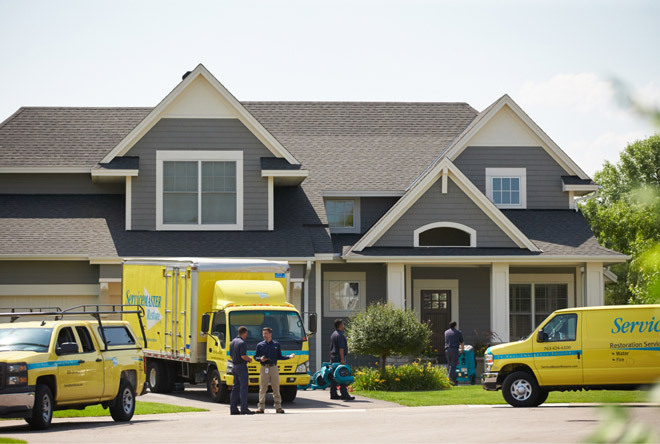 Soot Cleanup in Boulder
Soot Cleanup in Boulder
Soot damage cleanup, how to clean up soot after fire damage.
Soot Cleaning After a Fire
Has your home been damaged by a wildfire or house fire? ServiceMaster of Boulder can help!
The truth is that soot cleanup can be dangerous if not done correctly. Don’t risk it—let our technicians in Erie take care of it for you. We understand the science behind soot cleaning and how to efficiently restore your property from the damage caused by a fire.
A Trusted, Local Soot Cleanup & Fire Restoration Company
At ServiceMaster of Boulder, we use the appropriate cleaning solvents, equipment, and techniques that come from proper training and certification. On top of that, we have years of experience.
For steps to mitigate fire damage restoration and for the most common steps taken to mitigate fire damage, we’ll discuss soot cleanup as a primary result of fire damage that should be professionally remedied by trained experts using the right equipment.
Call(303) 529-7268 to get a quote today! You can alsorequest a quote online here.
How to Clean Up Soot After Fire Damage—the Right Way
After a fire, you will likely notice dreadful black or brown deposits—called soot—on your walls, carpet, furniture, and almost everything else. You might feel tempted to clean up these oily, tarry particles quickly, using conventional cleaning treatments. Sadly, soot cleaning is not as simple as washing away common dirt and grime.
In fact, improper soot removal methods can further the damage already done to your home or business. ServiceMaster of Boulder discusses the complexities and challenges of soot removal that you should consider before fire damage restoration.
What to Know About Cleaning Up Soot After Fire Damage
Soot Consists of Potentially Harmful Chemical Compounds
Soot from a fire consists of layers of tiny particles that contain a complex mixture of carbon and other chemical compounds. These particles arise from the burning and subsequent incomplete combustion of materials, such as wood, plastics, and textiles, and even materials containing lead paint and asbestos. In other words, these are potentially hazardous deposits that represent what was burned and the hundreds of other chemicals that adhered to it.
As such, precautionary measures should be taken during soot cleaning. Personal protective equipment—such as splash goggles, gloves, and respirators—may be necessary to safeguard against eye, skin, and respiratory irritation, as well as other harmful health effects.
Soot Travels to Areas Well Beyond the Fire Source
The airborne particles travel with smoke throughout the house or building structure. Because smoke is drawn to cooler surfaces, eventually soot particles settle on both vertical and horizontal surfaces beyond the fire source. Soot can also work its way into hard-to-access areas. A few examples include the HVAC system, attic, and inner walls.
Porous contents—such as carpet, upholstered furniture, and window coverings—absorb soot, which can cause deep and permanent staining if not removed properly. Since soot becomes acidic when combined with moisture, it can discolor, etch, pit, and even corrode nonporous surfaces, if not removed completely and promptly.
All of these factors add to the complexity and challenge of soot cleaning.
The Type of Smoke Damage Impacts Soot Cleaning
Another variable to consider that impacts soot removal is the type of smoke damage that occurred. Smoke damage is classed into different categories, such as dry, wet, and protein-based.
For example, dry smoke results from a high-temperature, fast-burning fire. It leaves more of a black powdery residue. In contrast, a low-heat, slow-burning fire produces wet smoke and a sticky, smeary residue. If this soot dries quickly, it can turn into a lacquer-like film, making soot cleaning even more difficult.
Soot Removal Protocols
Types of soot differ from fire to fire. As such, soot cleaning methods also vary. Our certified soot removal technicians in Boulder will determine the types of soot deposited after a fire.
In general, we follow a soot removal process that begins with dry soot cleaning using specialized HEPA vacuums and dry surface cleaning techniques. We then progress with wet-cleaning techniques as necessary. After the building structure and contents are thoroughly cleaned and sanitized, we follow up by neutralizing tough odors.
For expert soot removal in Boulder, as well as odor removal or smoke damage repair, call(303) 529-7268 today.


